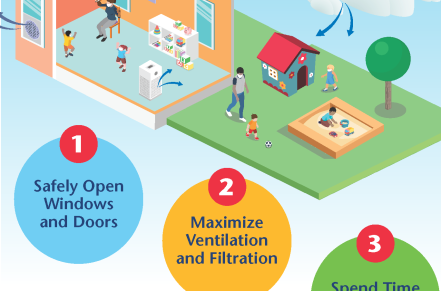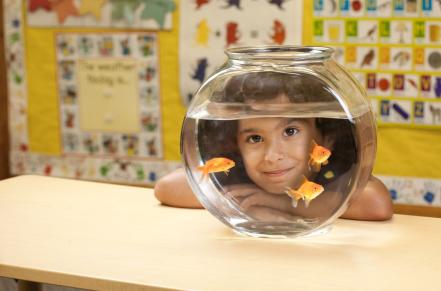Many early childhood professionals are wondering what to do when a child in their program has a runny nose. Runny noses are common in children, and a runny nose is one of the symptoms of COVID-19. During the COVID-19 pandemic, child care providers have been especially careful to keep children with signs of COVID-19 away from other children and staff. But what about a runny nose?
What does a runny nose mean?
A runny nose can mean many things. A runny nose can be from an allergy, asthma, or other condition, or it can be a sign of an infectious illness like the common cold or COVID-19. Each child’s health status and possible exposure to COVID-19 at home or in the community is unique. There is no single cause for a runny nose.
Does a child with a runny nose need to stay home?
Before the COVID-19 pandemic, a child with a runny nose who was playful and able to participate would not have stayed home. During the pandemic and before vaccinations became widespread, children with any symptoms of illness would have been be excluded from child care. Now, as the State reopens, the main concern is reducing the risk of spreading COVID-19 to staff and children who are not yet fully vaccinated or cannot wear a mask. Children under five years of age cannot be vaccinated until the vaccines are approved for their age group, and children under two years old can’t wear masks because of the risk of suffocation. So, a child with a runny nose may need to stay home to protect the unmasked and unvaccinated in your program.
Tips for managing runny noses in child care programs:
Conduct Daily Health Checks for Symptoms of COVID-19: The daily health check ensures you will know about a child’s runny nose before their parent/guardian leaves. Keep a log of children’s health checks so you know if a runny nose is a new symptom.
- If the child with a runny nose has a negative COVID-19 test, and the child is feeling well enough to participate, you can assume it is safe for them to attend your program.
- If the child with a runny nose has a history of allergies, asthma, or other condition that may be causing the runny nose, ask the parent/guardian to provide a note with an alternate diagnosis from the child’s health care provider. (The child’s health care provider may still recommend a COVID-19 test.) A child with an alternative diagnosis can attend your program.
- If the child with a runny nose does not have an alternative diagnosis from their health care provider and does not have a recent negative COVID-19 test, they will need to stay home for 10 days. After 10 days have passed, they can return, as long as their symptoms have resolved and they have not had a fever for 24 hours.
Communicate Your Illness Policy: Update your written policies to include how you will handle runny noses, and communicate your illness policy to staff and parents. Make sure your policy is fairly applied. Any child who does not feel well enough to participate, no matter what the cause, should stay home.
What other steps should I take to reduce the risk of spreading COVID-19 in my program?
Encourage Vaccination: The more people who are fully vaccinated, the lower the risk of spreading COVID-19 in your child care program. We knowthat the vaccines are effective at preventing severe symptoms, hospitalization, and death from COVID-19. Vaccinated people are less likely to get or spread the disease, and they create a safe “cocoon” around those who cannot be vaccinated.
Take a Layered Approach: Continue to maximize ventilation, air filtration, and fresh air; keep groups small and stable; wear a mask indoors; get vaccinated when eligible; stay home if you are sick; and wash your hands frequently.
Updated November 2021, UCSF California Childcare Health Program
This article was made possible with funding from the Heising-Simons Foundation.




